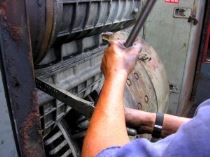In the asset-intensive industry, usability is becoming a subject of increasing priority.
 If we look back at the early days of computerized maintenance management systems (CMMS) in the 1980s, we typically get an image of a few users on a system with green screens. Those few users were not only the experts with such a system, but also often the people responsible for the maintenance program and equipment/asset information.
If we look back at the early days of computerized maintenance management systems (CMMS) in the 1980s, we typically get an image of a few users on a system with green screens. Those few users were not only the experts with such a system, but also often the people responsible for the maintenance program and equipment/asset information.
For a long time, it was a common view that 80 to 90 percent of staff performed a few, repetitive functions in CMMS, and the other 10 to 20 percent were the software experts. It’s a different story today with almost everyone in the workplace used to and comfortable with using computers and mobile devices. This has implications for CMMS and modern enterprise asset management (EAM) software.
Because of this new expectation of ready access to data across the workforce, demands on the usability of a system are critical. The system must be fit for purpose and fit for specific user roles.
In the asset-intensive industry, usability is becoming a subject of increasing priority, where the fundamental start point is this: The user interface must be intuitive, easy to learn, and easy to use. Why is this so important today?
Here are five simple reasons:
- In the asset-intensive industry, the majority of the users of a system are not actually hired in order to use a system as their primary working tool. So having a smart way of getting correct information, with staff being able to report in an easy and efficient way, is very important.
- If an employee can get correct information on time, the possibility of executing the correct action will increase. This will increase plant efficiency (and, perhaps, the profitability) for a company.
- Searching for the right data must also be easy and non-complex as the user might work in a harsh and rough environment. So having an intuitive user interface is a key factor in reaching plant efficiency.
- One more benefit of a simple user interface is increasing data quality. If the user has a fit-for-purpose interface and can report on the spot, this will enable the user to create KPIs and business intelligence that we can rely on and also take better decisions.
- In the long run, this will lead to improvements in the plant and the maintenance organization that will increase plant efficiency.